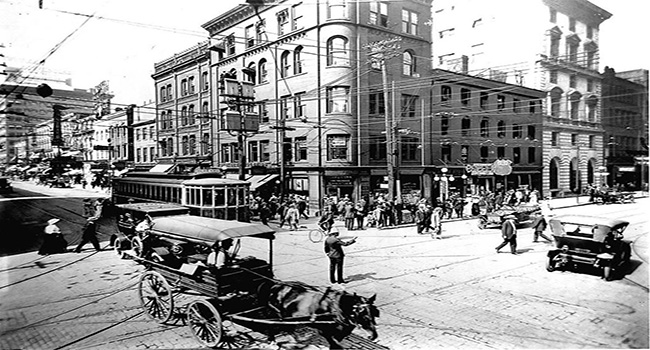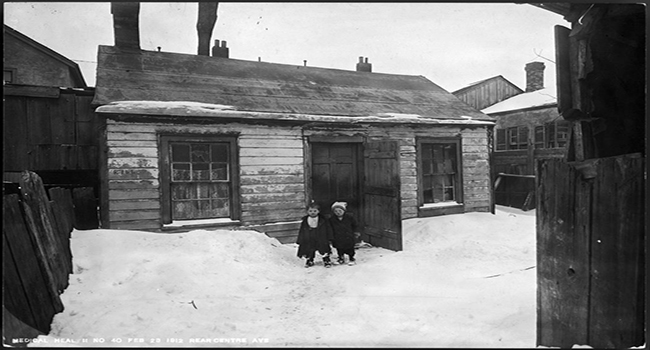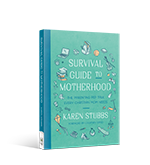
Sign Up for Updates
Connect
TOPICS
- Latest Blog
- Fiction
- Inspirational/Devotional
- Men's Christian Living
- Prophecy
- Women's Christian Living
- View All
ARCHIVES
A Voice for the Voiceless
Posted on Apr 07, 2016 Topic : Fiction
Posted by : Rachel McMillan

(© City of Toronto Archives, 1912 - N.E. Corner of King and Younge)
As a pastor’s kid, several of my earliest memories involved the church and my dad’s office. One day, (I think I must have been 8 or 9 years old) I decided I would memorize the entire Bible. I flipped open Dad’s big hardcover Bible and decided to start with whatever verse I landed on:
“Speak up for those who cannot speak for themselves, for the rights of all who are destitute. Speak up and judge fairly; defend the rights of the poor.” (Proverbs 31:8-9).
I committed it to memory but soon it was time to go home, wiggle out of my itchy pantyhose, and have Sunday dinner. I forgot about my lofty memorization goal, but I never forgot the verse.
New Opportunities, New Struggles
Years later, the research I conducted on 1910-era Toronto for my Herringford and Watts Mysteries series revealed a Tower of Babel. A third wave of Canadian immigrants spilled in from the four corners of the world in hope of finding a new life. The largely English and Scotch Protestant population that awaited these newcomers to Canada’s largest city often met them with prejudice. Nevertheless, trains continued to screech into Union Station, ships’ horns still bellowed arrivals in the harbor, and men, women, and children hoping to step out of their past and into a brighter future continued to cross The Bridge of Sighs over Simcoe Street and into the heart of the city.

(© Arthur Goss, 1912 - Children of the Ward at Centre Ave, Toronto archives)
Most immigrants found intermittent work and scraped by in St. John’s Ward, the ramshackle slums overlooked by the new, regal city hall. The language barrier wasn’t their only obstacle. Peddlers, newsies and seamstresses were subject to poor wages and even poorer working conditions. Immigrant men struggled to find someone to listen to them while women and children were almost completely silenced.
Real Life Becomes Fiction
In the Herringford and Watts Mysteries series, lady detectives Jem and Merinda, alongside their allies Jasper Forth and Ray DeLuca, attempt to find voices for the voiceless and to advocate change in a city on the brink of something new. Merinda and Jem take pro bono cases from women in St. John’s Ward who feel they have nowhere else to turn. Jasper Forth sees corruption within the ranks of the Police who will turn a blind eye to the pleas of lower-class citizens if instructed to by the city’s self-serving mayor. Ray DeLuca, a muckraking reporter for The Hogtown Herald, goes undercover in flophouses and prisons and writes of the abhorrent conditions therein.
In my research I found several historical persons who shared this advocacy. Photojournalist Arthur Goss used his camera to document pictures of the squalor in the Ward while Dr. Charles Hastings, Toronto’s Medical Officer of Health, reported extensively on wretched conditions making recommendations that led to better hygiene, immunizations and sanitary conditions.
Today's Toronto - A Rich Cultural Tapestry
Toronto now enjoys the reputation of being one of the most multicultural cities in the world and is frequently named in top magazines and online articles as a city with some of the best living conditions, but it took several brave and caring people willing to heed the words of Proverbs 31:8-9 to reach this equilibrium and harmonious patchwork quilt of cultures and stories.

Read more in The Bachelor Girl's Guide to Murder by Rachel McMillan

